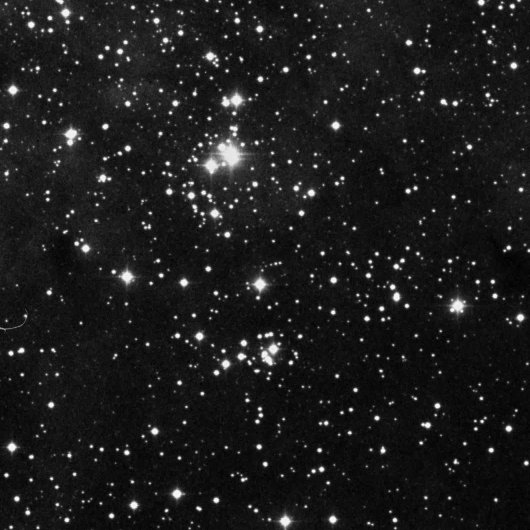Magnitude 11.4 | Absolute magnitude -10.6 Apparent magnitude (V) 11.4 | |
 | ||
People also search for Cygnus OB2, Iota1 Cygni, Pi2 Cygni | ||
Cygnus OB2 #12 is an extremely bright blue hypergiant with an absolute bolometric magnitude (all electromagnetic radiation) of −10.9, among the most luminous stars known in the galaxy. This makes the star nearly two million times more luminous than the Sun, although less than half the estimates when the star was first discovered. It is now known to be a binary, with the companion approximately a tenth as bright. A very approximate initial estimate of the orbit gives the total system mass as 120 M☉ and the period as 30 years.
It is a member of the Cyg OB2 Association, a cluster of young massive stars about 5,000 light years away in Cygnus, and resides in a region of the Milky Way from which visible light is heavily absorbed by interstellar dust when viewed from Earth. The dust causes the star to be strongly reddened despite being an intrinsically hot and blue star, hence it has been extensively studied in the infra-red. Were it not for the dust extinction, the star would have a visual magnitude about 1.5, nearly as bright as Deneb (Alpha Cygni), but because of the dust the observed visual magnitude is 11.4 so that it requires binoculars or a small telescope to be seen.
There are several fainter stars around Cygnus OB2 #12, thought to comprise a small cluster. Two stars are only resolved by speckle interferometry. One is thought to be a main sequence B star in a 100-200 year orbit. It is 2.3 magnitudes fainter than the primary star and 0.063" away. The other is 4.8 magnitudes fainter and about an arc-second distant.
Cygnus OB2 #12 is a candidate luminous blue variable (LBV). Its position in the HR diagram, luminosity, and spectrum all classify it as an LBV. It shows brightness variations of a few tenths of a magnitude, but these do not seem to be associated with colour changes that would be expected from an LBV. The spectral type has varied slightly since its discovery, but not to the extent that would be normal for an LBV.
